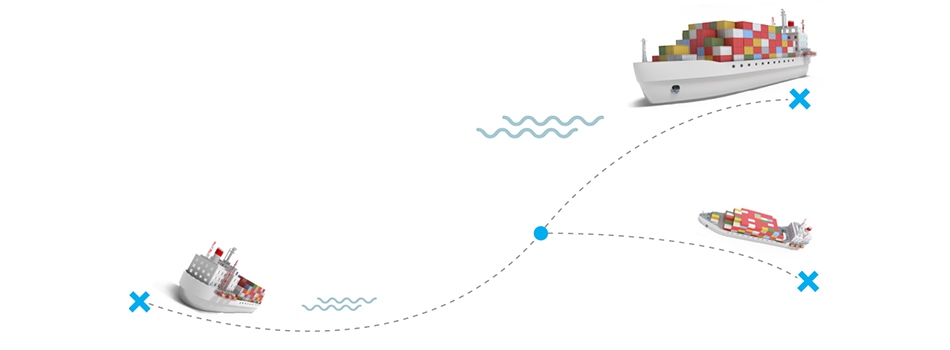Is globalisation leaving the poorest countries behind?

By Dr Michael Nower, August 2022
.png)
As international trade rises, Dr Michael Nower asks, how have countries with varied incomes been impacted differently?
Globalisation, and the associated falls in the costs of trading goods and services internationally, has resulted in an explosion in global trade volumes, rising from 25% of global GDP in 1970 to over 57% in 2018.
One of the easiest ways to see the impact of globalisation is through the changing impact of geographical distance on trade. As trading internationally has become cheaper and easier and global shipping costs have fallen, countries have been increasingly trading with others further away from them. However, the question arises whether this impact on trade has been evenly distributed across countries, and if not, if there’s a pattern to these cross-country variations, i.e. have the poorest countries been ‘left behind’? And if they have, what can be done to spread the benefits of globalisation more evenly? Recent research conducted in the Business School can shed some light on this question.
For trade in goods, middle-income countries like China have experienced the largest falls in the impact of distance, trading substantially more with countries that are further away. In contrast, higher-income countries like the UK, and lower-income countries like Indonesia, have experienced much smaller declines in the impact of distance on their trade in goods. For trade in services, the relationship is different, with the richest countries experiencing the greatest declines in the impact of distance compared to both middle-income and lower-income countries. At face value, these findings suggest that globalisation has indeed left the poorest countries behind.
However, to examine the impact of globalisation more deeply, it’s necessary to distinguish changes in the overall impact of distance coming from two sources: (1) changes within each industry and (2) changes coming from the composition of trade. For example: if the UK used the decline in shipping costs to import less furniture from European countries and more from China, this would represent the first source of change. Whereas, if the UK used the decline in shipping costs to trade more car parts back and forth with European countries as part of a more integrated supply chain, this would represent the second source of change.
Breaking down the changes examined above, we can again see a sharp contrast between the poorest and the higher-income countries. For middle-income countries, there’s been very little change in the composition of their goods trade, with most of the substantial declines in distance coming from changes within industries. For the poorest countries, a similar pattern emerges, meaning that for them, the impact of globalisation on goods trade can’t be seen either in the composition or in the impact of distance within industries. In contrast, the composition of higher-income countries trade changes substantially. These countries trade more over time in goods industries that are more impacted by distance. They’re also able to take advantage of the declines in international shipping costs to outsource supply chains to nearby countries, resulting in large reductions in the costs of production.
One key explanation for why lower-income countries have been unable to take advantage of globalisation is their focus on the production and export of primary products, such as agricultural goods. Over time, these primary products, that they are so dependent on, have remained persistently impacted by distance. For these industries, the impact of distance has barely changed over time despite the falls in global shipping and freight costs.
Returning to the original question, we can see clear evidence that the poorest countries have indeed been left behind in trade in both goods and services. Middle-income countries have experienced greater falls in the impact of distance than lower-income countries in both trades, and higher-income countries have experienced the largest falls in the impact of distance on their services trade while being able to more closely integrate their supply chains in goods highly impacted by distance. It's only the lowest income countries that have neither experienced large declines in the impact of distance, nor been able to more closely integrate their supply chains, and therefore have been ‘left behind’ by globalisation.
Going forward, if globalisation is truly to benefit all countries, then substantial improvements in global trade infrastructure will be needed. For goods, improvements in the capacity of international ports and airports and the expansion of internal transportation infrastructure would be immensely beneficial. For services, the improvements in telecommunications infrastructure that have spilled over to so many other service industries should be expanded dramatically. Alternatively, a structural shift in the lower-income countries, away from primary products that remain unresponsive to globalisation and towards manufacturing would likely bring substantial benefits. If such change is achieved then it will become possible for the benefits of globalisation to expand, and no longer leave the poorest countries behind.
More information on Dr Nower's research interests.

/prod01/channel_3/business/media/durham-university-business-school/impact/Home-Header-or-Footer-(13).png)